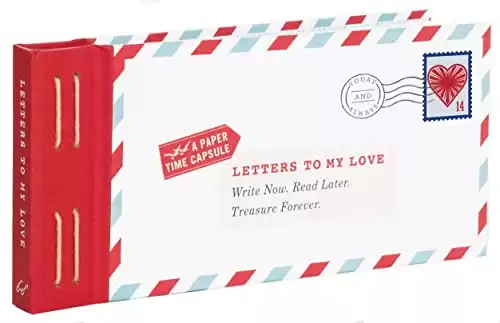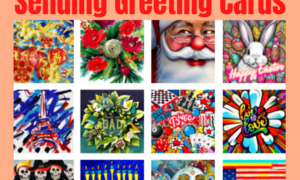
World Letter Writing Day is Today!
Download the 38 Hertz Celebration Book with 365 days of celebrations!
HOW TO CELEBRATE WORLD LETTER WRITING DAY STEP-BY-STEP
- Purchase some nice new stationery.
- Take a letter writing course.
- Buy that book on how to write love letters.
- Read 10 of the most romantic letters of all time.
- Write a letter to an elder person at Love for Our Elders.
- If you love the article image, purchase it on these fun products on Zazzle!
FEATURED ITEM ON WORLD LETTER WRITING DAY
 Letters to My Love: Write Now. Read Later. Treasure Forever. (Love Letters, Love and Romance Gifts, Letter Books)
Letters to My Love: Write Now. Read Later. Treasure Forever. (Love Letters, Love and Romance Gifts, Letter Books)
In a world of texts, tweets, and email, there’s something special about receiving a handwritten letter in the mail. Whether it’s a birthday card from a friend or a thank-you note from a family member, taking the time to put pen to paper can brighten someone’s day. And in an age where we often communicate through screens, there’s something intimate and personal about receiving a handwritten letter. It’s like getting a hug through the mail.
But letter writing isn’t just about making the recipient feel good. It’s also about the joy and satisfaction that comes from putting your thoughts into words and taking the time to craft a message. In a fast-paced world, it’s important to slow down and savor the process of communication. So next time you need to say thank you, happy birthday, or just hello, take the time to write a letter. Your words will be appreciated – and you might just enjoy the process as well.
WORLD LETTER WRITING DAY: A BRIEF HISTORY OF LETTER WRITING
The history of letter writing is almost as old as civilization itself. The first known examples date back to ancient Egypt, where letters were often written on papyrus scrolls. In the Middle Ages, love letters became increasingly popular, as noblemen and ladies exchanged them as a way of courting one another. By the 18th century, letter writing had become an art form, with many famous authors and poets using it to great effect.
Some of the most famous letters in history are those that were never meant to be seen by anyone but the person they were addressed to. Love letters, in particular, often contain highly personal and intimate thoughts that can provide a fascinating insight into the writer’s innermost emotions. From Shakespeare’s passionate declarations to Napoleon’s tender words to his wife, these letters offer us a rare glimpse into the hearts and minds of some of history’s most famous figures.
100 WAYS TO CELEBRATE WORLD LETTER WRITING DAY
- Letter Writing Party: Gather friends and family for a letter writing party, where everyone can share stories and memories through handwritten letters.
- Pen Pal Exchange: Connect with a pen pal from another country or culture and exchange letters to learn about each other’s lives and experiences.
- Write Letters of Gratitude: Take time to write letters expressing gratitude to friends, family, or mentors who have positively impacted your life.
- Write Letters to Future Selves: Write letters to your future selves, reflecting on your goals, dreams, and aspirations for the years ahead.
- Letter Writing Workshop: Attend a letter writing workshop to learn tips and techniques for crafting meaningful and effective letters.
- Create a DIY Stationery: Get creative and design your own personalized stationery with unique patterns, colors, and designs for your letters.
- Letters to Veterans: Write letters of appreciation and support to veterans, thanking them for their service and sacrifices.
- Write Letters to Lawmakers: Advocate for change by writing letters to lawmakers about important social or political issues that matter to you.
- Letter Writing Marathon: Challenge yourself to write a certain number of letters in a designated time period, such as a letter writing marathon.
- Leave Letters in Public Places: Leave anonymous letters of encouragement or inspiration in public places for strangers to find and enjoy.
- Write Letters to Authors: Reach out to your favorite authors and share how their books have impacted your life with heartfelt letters.
- Letters to Teachers: Show appreciation to teachers by writing letters expressing gratitude for their dedication and hard work in educating others.
- Letters to Healthcare Workers: Send letters of thanks and encouragement to healthcare workers for their tireless efforts and dedication, especially during challenging times.
- Letters to Family Members: Take the time to write letters to distant family members, reconnecting and strengthening familial bonds through heartfelt communication.
- Write Letters to Celebrities: Reach out to your favorite celebrities or public figures with letters expressing admiration or sharing personal stories.
- Write Letters to Yourself: Practice self-reflection and self-care by writing letters to yourself, offering words of encouragement and affirmation.
- Letters to Foster Children: Write letters of support and encouragement to foster children, letting them know they are loved and valued.
- Write Letters of Apology: Take responsibility for past mistakes by writing letters of apology to those you have wronged, seeking forgiveness and reconciliation.
- Letters to Local Businesses: Show support for local businesses by writing letters of appreciation, sharing positive experiences, and offering feedback.
- Letters to Pet Shelters: Write letters of support and encouragement to pet shelters, thanking them for their work in caring for animals in need.
- Write Letters to Yourself in the Future: Seal letters addressed to your future self and set them aside to be opened on a future date, reflecting on how much you’ve grown and changed.
- Letters to Neighbors: Strengthen community ties by writing letters to neighbors, introducing yourself and offering assistance or friendship.
- Letters to Childhood Friends: Reconnect with childhood friends by writing letters reminiscing about shared memories and experiences from the past.
- Letters to Inspirational Figures: Write letters to inspirational figures who have made a positive impact on your life, expressing gratitude and admiration for their influence.
- Write Letters to New Friends: Forge new connections by writing letters to new friends or acquaintances, sharing interests, hobbies, and experiences with each other.
- Handmade Envelopes: Create custom envelopes using patterned paper, and decorate them with stamps or washi tape for a personal touch.
- Stamped Stationery Set: Make your own stationery set by stamping designs onto blank cards and matching envelopes for a coordinated look.
- Calligraphy Quote Art: Practice calligraphy and create framed quote art by writing inspiring messages on decorative paper or canvas.
- DIY Wax Seals: Design and craft your own wax seals using sealing wax and personalized stamps to add elegance to your letters.
- Paper Flower Bouquet: Craft a bouquet of paper flowers using colorful paper and wire stems, perfect for decorating letters or as standalone gifts.
- Fabric Covered Journals: Cover blank journals with fabric scraps and embellishments to create unique and personalized notebooks for writing letters.
- Vintage Postcard Display: Arrange vintage postcards in a creative display using frames or string to showcase your collection.
- Embellished Bookmarks: Make decorative bookmarks using cardstock, ribbon, beads, and charms to accompany your letters and books.
- Origami Envelope Pockets: Fold origami envelope pockets from decorative paper to hold small trinkets or notes within your letters.
- Embroidered Handkerchiefs: Embroider designs or monograms onto handkerchiefs for a thoughtful and functional addition to your letter-writing supplies.
- Quilled Paper Art: Create intricate designs and shapes using quilling strips, then frame them as decorative accents for your letter-writing space.
- Pressed Flower Stationery: Make stationery using pressed flowers and leaves, adhering them onto paper for a delicate and nature-inspired touch.
- DIY Sealable Wax Envelopes: Craft sealable wax envelopes using parchment paper and wax seals, adding elegance and security to your letters.
- Vintage Typewriter Key Jewelry: Repurpose vintage typewriter keys into unique jewelry pieces such as necklaces or bracelets for letter-writing inspiration.
- Watercolor Postcards: Paint watercolor designs onto blank postcards for a colorful and artistic way to send greetings and messages.
- Personalized Rubber Stamps: Carve your own rubber stamps with personalized designs or monograms to embellish your letters and envelopes.
- Paper Lanterns: Fold and assemble paper lanterns using decorative paper, then add LED tea lights for a cozy ambiance during your letter-writing sessions.
- Recycled Paper Notepads: Repurpose scrap paper into notepads by binding them together with glue or twine, creating eco-friendly writing surfaces for your letters.
- Decoupage Letter Holders: Decorate wooden letter holders with decoupage techniques using patterned paper or fabric scraps for stylish organization.
- Handmade Bookbinding: Learn bookbinding techniques to create custom journals or notebooks for jotting down thoughts and writing letters.
- Stamped Tea Towels: Stamp designs onto plain tea towels using fabric paint, creating functional and decorative kitchen accessories.
- Paper Quilt Cards: Piece together paper squares to create quilt-inspired greeting cards for sending warm wishes to loved ones.
- DIY Vintage Postage Stamps: Design and print your own vintage-style postage stamps to adorn your letters and envelopes.
- Embroidered Patchwork Cards: Embroider fabric patches onto cardstock to create charming and textured greeting cards for special occasions.
- Upcycled Map Envelopes: Repurpose old maps or atlas pages into envelopes by folding and sealing them, adding a travel-themed touch to your letters.
- Scrabble Tournament: Organize a Scrabble tournament where players compete to create words and earn points using letter tiles.
- Letter Scavenger Hunt: Create a letter scavenger hunt where participants search for hidden letters around a designated area to spell out words or phrases.
- Alphabet Bingo: Play a game of Alphabet Bingo where players mark off letters on their bingo cards as they are called out, aiming to be the first to complete a row or column.
- Anagram Challenge: Challenge players to rearrange letters to form as many words as possible within a time limit in this fast-paced anagram game.
- Word Chain: Start with a word, and players take turns adding letters to form a new word while keeping the previous letters in order, creating a long word chain.
- Hangman: Play a classic game of Hangman where players guess letters to uncover a hidden word or phrase before the hangman is fully drawn.
- Letter Writing Relay: Divide into teams and compete in a relay race where players run to retrieve letters and bring them back to spell out words or sentences.
- Word Association: Sit in a circle and take turns saying words that are associated with the previous word, creating a chain of related words.
- Word Search: Solve word search puzzles where players search for hidden words within a grid of letters, competing to find the most words in the shortest time.
- Bananagrams: Play a fast-paced word game similar to Scrabble where players race to use all their letter tiles to create interconnected words.
- Crossword Puzzle Race: Race against the clock to complete crossword puzzles, either individually or in teams, to see who can finish first.
- Scattergories: Roll a letter die and race against the timer to come up with words that fit specific categories starting with the rolled letter.
- Word Relay: Form relay teams and race to pass a message written one word at a time, with each player adding one word until the message is complete.
- Spelling Bee: Host a spelling bee competition where participants take turns spelling words aloud, challenging their spelling skills and memory.
- Dictionary Game: Choose obscure words from the dictionary and challenge players to come up with convincing definitions, guessing the correct one to earn points.
- Word Charades: Act out words or phrases without speaking while teammates guess what word you’re representing, adding a twist to the classic game of charades.
- Word Memory: Lay out a grid of word cards face down, and players take turns flipping over two cards at a time to find matching pairs of words.
- Word Jumble Race: Race against opponents to unscramble mixed-up letters and form as many words as possible within a time limit.
- Spelling Relay: Divide into teams and race to spell out words correctly, with each team member adding one letter at a time until the word is complete.
- Word Guessing Game: Write down words on slips of paper and take turns describing them without saying the word itself, while others guess what word it is.
- Storytelling Game: Start a story with a single word, and each player adds one word at a time to build a collaborative story filled with twists and turns.
- Word Trivia: Test your word knowledge with trivia questions about the origins, meanings, and usage of various words and phrases.
- Word Puzzles: Solve a variety of word puzzles such as anagrams, cryptograms, and acrostics to challenge your linguistic skills and creativity.
- Synonym Challenge: Challenge players to come up with as many synonyms as they can for a given word within a time limit, testing their vocabulary and creativity.
- Word Relay Race: Divide into teams and race to pass a ball or object while spelling out words letter by letter, adding an element of physical activity to the game.
- Personalize Your Greeting: Start your letter with a personalized greeting to make the recipient feel valued and appreciated.
- Use Quality Stationery: Invest in quality stationery to enhance the presentation of your letter and make it more enjoyable to read.
- Be Genuine: Write from the heart and be genuine in your words to convey sincerity and authenticity.
- Tell a Story: Share personal anecdotes or stories to engage the reader and make your letter more memorable.
- Express Gratitude: Take the time to express gratitude and appreciation for the recipient and their impact on your life.
- Be Specific: Be specific in your compliments and well wishes to show that you’ve put thought into your letter.
- Include Enclosures: If you’re sending additional materials such as photos or articles, mention them in your letter and enclose them securely.
- Keep It Concise: While it’s important to be heartfelt, also aim to keep your letter concise and to the point to maintain the reader’s interest.
- Proofread Carefully: Before sending your letter, proofread it carefully to check for any spelling or grammatical errors.
- Include Relevant Details: Include relevant details about your life or current events to keep the recipient informed and connected.
- Share Updates: If it’s been a while since you last communicated, share updates on what’s been happening in your life.
- Ask Questions: Encourage dialogue by asking questions that invite the recipient to respond and continue the conversation.
- Include Compliments: Offer sincere compliments to the recipient to boost their mood and strengthen your relationship.
- Use Humor (if appropriate): Inject some humor into your letter to lighten the mood and bring a smile to the recipient’s face.
- Use a Handwritten Signature: Sign your letter by hand for a personal touch that shows you’ve taken the time to craft your message.
- Address Envelope Neatly: Take care when addressing the envelope to ensure it looks neat and professional.
- Include Return Address: Always include your return address on the envelope in case the letter needs to be returned or forwarded.
- Consider the Recipient’s Preferences: Tailor your letter to the recipient’s preferences and personality to make it more meaningful to them.
- Share Memories: Reflect on shared memories or experiences to evoke nostalgia and strengthen your bond with the recipient.
- Offer Support: Let the recipient know that you’re there to offer support and assistance if they need it.
- Include Inspirational Quotes: Incorporate inspirational quotes or verses that resonate with the recipient’s interests or beliefs.
- Use Praise Language: Use positive and uplifting language to inspire and motivate the recipient.
- Express Hope and Optimism: Convey hope and optimism for the future to uplift the recipient’s spirits and provide encouragement.
- End on a Positive Note: End your letter on a positive and uplifting note to leave the recipient feeling encouraged and uplifted.
- Follow Up: After sending your letter, consider following up with the recipient to see how they’re doing and continue the conversation.
Note: If the above links do not direct you to the appropriate referral on the first try, return to the article and try again.
Do you have any ideas about how to celebrate World Letter Writing Day? Please share them!












